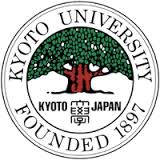
Until recently, he was in charge of publishing of a university newsletter named “Raku-yu”. Raku-yu’s contents are mainly focused on the university itself. It contains greeting letters from high ranking officials, university news, world-renowned alumni, and outstanding research results. However, the newsletter completed its destiny with its 28th volume. The university decided to merge the newsletter with a different university newsletter called “Research Activities”. The reason behind this decision was the expense of publishing the “Raku-yu”. Unlike POSTECH , the production of Raku-yu was done by a third party company. Therefore, one interesting fact of Raku-yu is that it does not have authors written on it. As the name suggests, Research Activities consists of academic articles. Unlike newspapers, the two newsletters are not easily found around campus. Instead, they are distributed online and to anywhere thought to be helpful for public relations. Since the decision was made recently, how the aspects of Raku-yu will be mingled with Research Activities is yet to be known.
The basic business of the public relations office is publishing recent research results on the university website, and academic websites such as Eurekalert and AAAS (AMERICAN ASSOCIATION FOR THE ADVANCEMENT OF SCIENCE). They also publish research results of the field of Humanities and Social Science. Some articles are written by professionals who do not belong to the public relations office, and Mr. Kornhauser’s task is to write public relations posts on the university Facebook page. Selecting which research results to publish is a significant matter. The university holds a conference with the members of the press club. The most important factor is whether it can attract the public’s attention. Also, the quality of research is digitized. The current president of Kyoto University researches gorillas, which may be one reason research on primatology is frequently published. His personal opinion on the university’s public relations is that there is lot to be ameliorated. The university is keeping up its reputation in Japan but is not doing well internationally due to lack of support in the public relations. Unlike Korean universities, including POSTECH, that promote a bilingual campus, it is nearly impossible to enroll in Kyoto University without decent Japanese proficiency. There is only one English-only subject in the Ph. D course in the whole university. There are international houses, but they are not sufficient to accommodate international students and most international students live off-campus.
ى €ى‘권ىگ © يڈ¬ي•ê³µëŒ€ى‹ 문 무단ى „ى¬ ë°ڈ ى¬ë°°يڈ¬ 금ى§€


